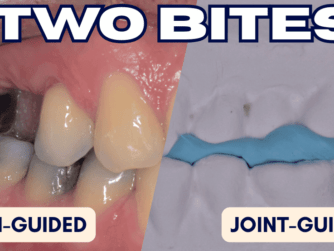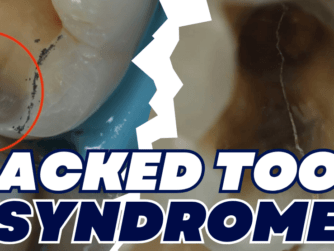Podcast: Play in new window | Download (Duration: 44:17 — 63.9MB)
Subscribe: RSS
Rubber Dam isolation can be tricky enough sometimes – it is especially awkward when the TERMINAL MOLAR needs restoring. How on earth does one isolate AND matrix this tooth?
In this episode, Dr. Celine Higton delves into the intricacies of rubber dam isolation, particularly focusing on the last tooth in the arch. This discussion ties into the broader theme of mental health, highlighting how mastering such techniques can lead to a more enjoyable and stress-free practice.
Protrusive Dental Pearl: “Cow Mode” as a technique to improve access to the mouth’s hard-to-reach areas, especially around the last molars. By instructing patients to shift their jaw to one side, akin to a cow’s chewing, this approach aids in better oral hygiene practices and facilitates procedures like rubber dam isolation when clamping the terminal molar.
Highlights of this episode:
- 02:24 Protrusive Dental Pearl
- 5:36 Introduction to Dr Céline Higton
- 7:07 The Journey from Architecture to Dentistry
- 9:15 Mastering Rubber Dam Isolation: Tips and Techniques
- 14:12 Types of Clamps Ideal for Isolating the Last Tooth (Upper)
- 18:01 Dental Pearl – Cow Mode
- 19:22 Accessing the Last Tooth
- 22:13 Dr. Céline’s Personal Choice of Rubber Dam
- 23:11 Proper Lubrication for Rubber Dam
- 25:00 Correct Flossing Technique
- 27:01 Matrixing the Last Tooth
- 32:09 Cavity Preparation
- 35:37 Isolating the Last Tooth (Lower)
- 37:28 Coronoid Process in Clamp Placement
- 38:36 How to get in touch with Dr Celine
Reach out to Dr. Céline Higton via her Instagram, @drcelinehigton and via her website, #RUBBERDAMFAM
Access the CPD quiz through our app on https://www.protrusive.app, either on your browser or by downloading our mobile app.
For the full educational experience, our Ultimate Education Plan gives you access to all our courses, webinars, and exclusive monthly content. Join us on Protrusive Guidance, our own platform for dental professionals. No need for Facebook anymore! 😉
If you love this episode, be sure to watch 10 Commandments for Staying Out of Trouble







